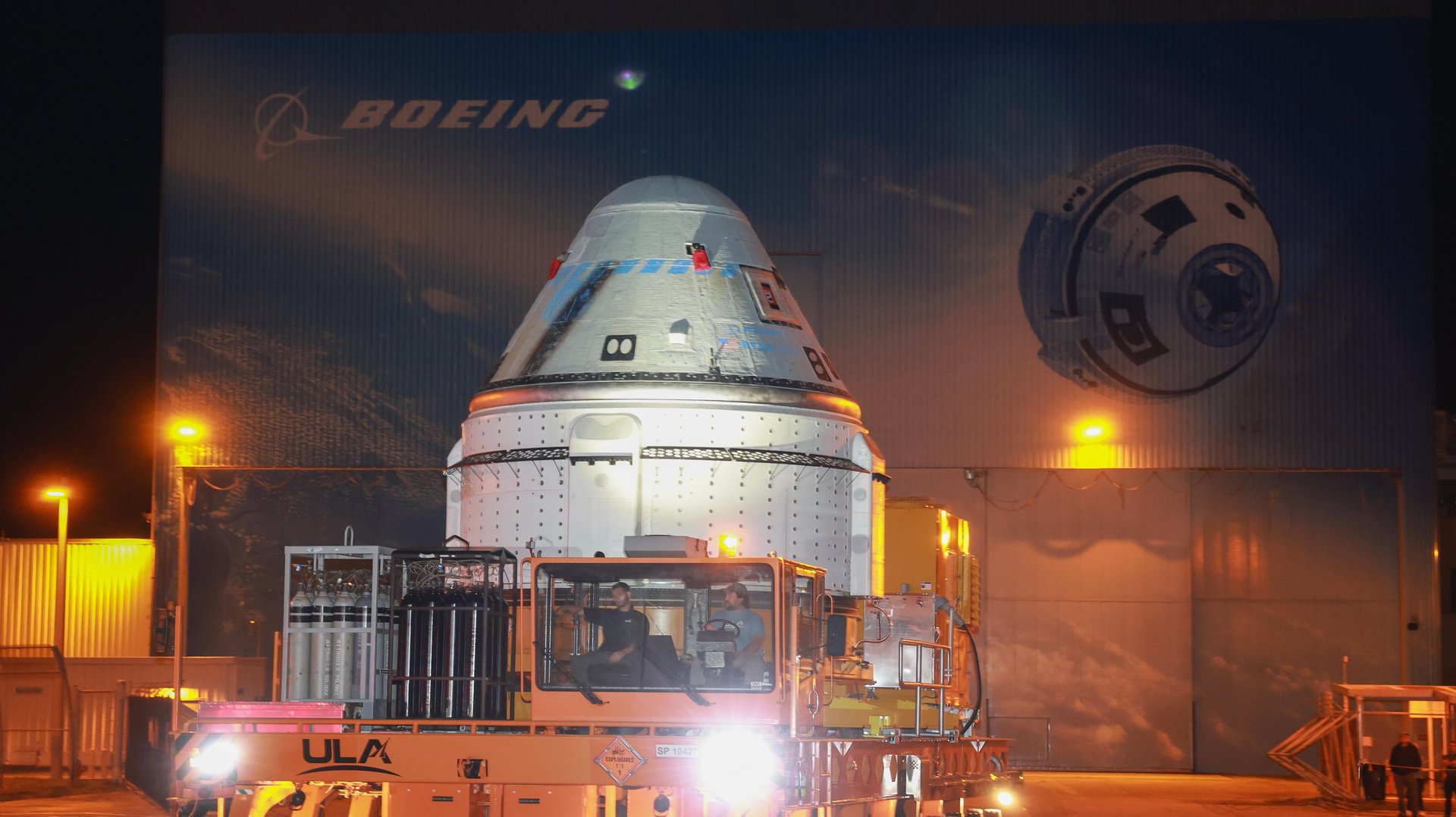Boeing's Starliner is still stuck at the International Space Station. Here’s what to know
The spacecraft doesn't have an anticipated return date

Boeing’s CST-100 Starliner, its long-awaited spacecraft designed to go back and forth to orbit like the space shuttle used to, is stuck at the International Space Station (ISS). After it was supposed to launch its first crewed mission on May 6, a number of delays saw it remain earthbound until early June, when it successfully left the atmosphere on its way to docking at the ISS. But now after multiple return trip delays, NASA officials said on Friday that the Starliner will remain in space indefinitely while they try to figure out what’s going on.
Suggested Reading
What’s the problem?
The cause for concern is a number of helium leaks that have been observed in the system that governs the Starliner’s propulsion system. The helium is used to control the amount of propellant that hits the ship’s thrusters — akin to the power steering in a car. The same problem had been observed before the launch, but the leaks were deemed insufficiently problematic to stop the mission. Still, NASA officials have said that studying the issue is a priority.
Related Content
“We are taking our time and following our standard mission management team process,” said Steve Stich, manager of NASA’s Commercial Crew Program earlier this month. “We are letting the data drive our decision making relative to managing the small helium system leaks and thruster performance we observed during rendezvous and docking.”
There is no helium leaking while the Starliner is at the International Space Station because the flanges where the leaks were observed are closed while the spacecraft is docked.
Is it hard to fix?
This is not the kind of thing that can be repaired from space. Michael Lembeck, a clinical professor of aerospace engineering at the University of Illinois, says that the helium leaks could have any number of factors. Maybe parts controlling the helium escape volume were improperly put together. Maybe forces that weren’t fully accounted for affected the helium tanks. Whatever it is, it’s in NASA and Boeing’s interest to figure it out now. The cabin, which holds the astronauts, has lots of heat protection for fiery trips through the atmosphere. But the service module, which stores the engines and the fuel and the helium tanks, does not.
“The service module itself you don’t bring home,” Lembeck said. “That burns up in the atmosphere when the capsule returns.”
Are the astronauts in danger?
There has been some worry about the fate of the astronauts flying on the Starliner, Butch Wilmore and Sunita Williams. For Williams especially, the international anxiety for her is haunted by the death of her friend and fellow astronaut Kalpana Chawla. When the space shuttle Columbia disintegrated in 2003, Chawla was aboard. But NASA officials have stressed that there is more than enough helium to bring the Starliner home.
At a June 18 press conference, officials reiterated that the ship needs seven hours of helium to make it home and has 70 hours’ worth aboard. When space debris threatened the International Space Station last week, Wilmore and Williams went into the Starliner and made preparations to escape if need be. (The debris passed without incident.) But if the leaks turn out to be too bad, the Starliner’s crew could stay at the ISS until it can catch another ride home — maybe aboard a SpaceX Dragon.
When will the Starliner come home?
On Friday June 28, NASA officials said that they didn’t have an immediately anticipated return date. In fact, they said during a weekly press conference that they’re charging the spacecraft’s batteries so that it can stay out longer than the 45 days they had initially envisioned. Meanwhile, scientists on Earth are doing tests at NASA’s White Sands Testing Facility to figure out what’s going on with the Starliner’s thrusters and whether any issues might pop up during the craft’s descent.
“Engineering teams are working to finalize testing plans and a timeline for the additional ground testing, which should occur over the next two weeks,” the agency said in a summary of the press conference. “They are taking advantage of the extra time by gathering as much data as possible while docked to station, considering the service module will not be recovered at the end of the mission.”
A return date will not be given until those tests are done.